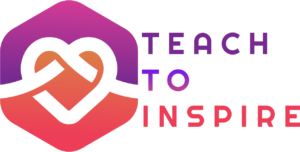In the dynamic landscape of education, one factor stands out as a cornerstone of success: student engagement. The art of capturing students’ attention, inspiring their curiosity, and fueling their desire to learn is a challenge educators have been grappling with for generations. In this blog post, we delve into the world of student engagement, exploring the reasons it matters and uncovering proven strategies that can help unlock students’ potential.
Why Student Engagement Matters
Student engagement isn’t just a buzzword; it’s a game-changer in the realm of education. Engaged students are active participants in their learning journey, absorbing information, applying critical thinking, and ultimately retaining knowledge more effectively. According to research, engaged students demonstrate higher academic achievement, improved problem-solving skills, and a greater sense of ownership over their learning outcomes.
Challenges to Student Engagement
Despite the evident benefits of student engagement, educators face a myriad of challenges when trying to foster it. Distractions from social media, disinterest in traditional teaching methods, and the diversity of learning styles within a single classroom can all hinder engagement. It’s not uncommon to find students struggling to maintain focus in an age where attention spans are constantly tested by digital stimuli.
Proven Approaches to Enhancing Student Engagement
1. Active Learning Techniques
Active learning is a pedagogical approach that puts students in the driver’s seat of their education. Rather than passive recipients of information, students become active participants through strategies like group discussions, case studies, and hands-on activities. For instance, a biology class could transform into an exploratory adventure as students dissect specimens and discuss findings collaboratively.
2. Incorporating Technology
Technology, often blamed for diminishing engagement, can be harnessed to reignite it. Educational apps, online platforms, and multimedia content provide interactive experiences that cater to diverse learning preferences. Imagine a history lesson coming to life with virtual tours of historical sites or an interactive math app that turns problem-solving into a game.
3. Personalized Learning Paths
No two students are the same, which is why personalized learning has gained traction. Adaptive learning tools use data to tailor content to individual strengths and weaknesses. A struggling student might receive additional resources in areas they find challenging, while an advanced learner can explore more complex concepts, ensuring engagement at every skill level.
4. Project-Based Learning
Project-based learning bridges the gap between theoretical knowledge and real-world application. By working on projects that mimic authentic challenges, students engage in hands-on problem-solving, critical thinking, and creativity. Whether building a model solar system or researching solutions to local environmental issues, students are motivated by the tangible outcomes of their efforts.
5. Building a Supportive Learning Community
A positive classroom environment is the breeding ground for engagement. Fostering a sense of belonging and community encourages students to share ideas, collaborate, and take risks. When students feel valued and supported by both their peers and teachers, they’re more likely to actively participate in discussions and contribute meaningfully to the learning process.
Implementing Strategies: Tips for Educators
- Start small and gradually integrate new strategies into your teaching approach.
- Gather feedback from students to assess the effectiveness of engagement efforts.
- Adapt strategies to suit your students’ unique needs and learning preferences.
- Continuously refine your approach based on student responses and outcomes.
Conclusion
As educators, our goal is to ignite the spark of curiosity within each student and provide them with the tools to unlock their potential. By understanding the significance of student engagement and incorporating proven strategies into our teaching methods, we can create vibrant learning environments where students thrive. Remember, the journey to unlocking potential begins with the key of engagement.

